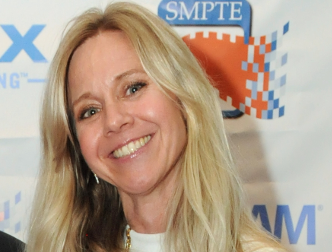SMPTE Q&A—Sara Kudrle
Shortly before the start of the SMPTE 2016 Annual Technical Conference & Exhibition, NewBay editors spoke with Sara Kudrle about her session “File Workflows and Formats 2 —IMF and DPP-Interoperability From Creation to Delivery.”
TV TECHNOLOGY:How many new IP standards can we expect over the next five years?

SARA KUDRLE: Ideally, just one: SMPTE ST 2110. IP Standards are currently in use for both compressed and uncompressed video signals. If I can narrow down the question to uncompressed signals for live production, ideally all vendors and users would follow one roadmap, such as the one promoted by the Alliance for IP Media Solutions (AIMS). The alliance is working with industry organizations and standards bodies, such as Video Services Forum (VSF), the Joint Task Force on Networked Media (JT-NM), the Advanced Media Workflow Association (AMWA), the European Broadcasting Union (EBU) and Society of Motion Pictures and Television Engineers (SMPTE), taking the work they’ve done to foster a unified path to IP interoperability. These industry experts are working towards a single standard, which is currently in progress, SMPTE ST 2110.
TVT:Should the United States make DPP a requirement as it is in the United Kingdom?
SK: Today all of our delivery standards are voluntary. Digital Production Partnership (DPP) offers some interesting advantages in delivering file formats, but when and where DPP is used should remain up to the individual broadcaster in order to best meet their needs.
TVT:Do these file formats have the flexibility to hold data from media files far beyond what's available today? Will they inevitably need to be upgraded at some point?
SK:Using the internet as a model, there are constant improvements and updates to the efficiency of delivery via new compression schemes and file formats. For instance, we used to have MPEG2 and then MPEG4 and now we have HEVC. As technology advances, formats will adapt. The file formats being suggested at this time have been designed to be flexible into the future, based on our current knowledge. It’s hard to say for certain what the future will bring and what features or requirements will be needed. File-based workflows have come a long way and the work continues. These formats have legs. Only time will tell how long they are.
TVT:Aside from technological issues, what are the most significant obstacles to an industry-wide adoption of a specific file format right away?
SK: Aside from technological issues, I would say a large obstacle would be the established workflows that work well today. Suggesting that someone change to another format, unless their model is broken, is not going to gain traction nor be a high priority. Instituting new workflows and the training that goes along with that task can introduce significant costs. Unless there is a clear monetary benefit to changing, broadcasters will wait until it affects them. Additionally, big internet companies have their own preferred codecs: Apple has ProRes. Google uses VP9 and is developing AV1. Netflix is moving to IMF.
Another obstacle is that some applications may not be covered by a one-size-fits-all approach and as new applications appear, they may need new specific features.
TVT:Does interoperability necessarily require some kind of compromise over using more project- or display-specific formats?
SK:Interoperability means that it plays well with others. In my experience, playing nice with others has always meant some sort of compromise along the way. That’s the nature of collaboration; finding an equitable way to work together. In the long-run, the small compromises that are required pay off in greater efficiency, accelerated innovation and more confidence among buyers.
Sara Kudrle is currently Product Marketing Manager, Networking for Grass Valley, a Belden Brand. She is active within SMPTE serving on several committees and within the standards community. Sara is a current SMPTE Secretary/Treasurer and former Section Manager for Sacramento as well as the Western Region Governor for SMPTE.
Get the TV Tech Newsletter
The professional video industry's #1 source for news, trends and product and tech information. Sign up below.
